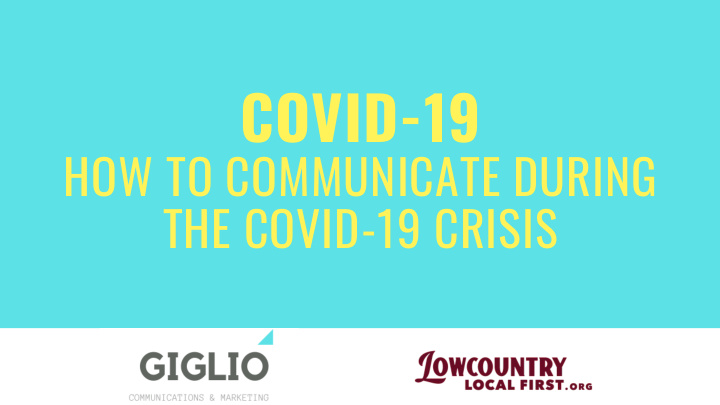



COVID-19 HOW TO COMMUNICATE DURING THE COVID-19 CRISIS
CRISIS COMMUNICATIONS BEST PRACTICES Be transparent Be honest and open and maintain credibility Outline response team Communicate early and often Stick to your brand and voice Focus on facts and identify credible sources of information and where facts are coming from , never guess
EDELMAN TRUST BAROMETER Most trusted source of information by person VALUES SCIENTISTS MY DOCTOR CDC / WHO
EMPLOYERS ARE THE MOST TRUSTED SOURCES OF INFORMATION BY GROUP 69% of Americans trust their employers to take responsible actions 75% of Americans believe that businesses must act to protect employees and the local community 54% of Americans want their employers to update them at least once a day
BEST CHANNELS OF COMMUNICATION FOR EMPLOYERS Company - wide emails or newsletters Internal company website EMPLOYERS ARE SEEN AS BETTER PREPARED THAN THE COUNTRY IN HANDLING THE CRISIS (51% V 43%)
COMMUNICATING DURING CORONAVIRUS STEP 1: DETERMINE YOUR CRISIS TEAM HBR says it should include someone from : Leadership HR Communications Medical field ( if possible )
COMMUNICATING DURING CORONAVIRUS STEP 2: UNDERSTAND WHAT IS IMPORTANT TO EACH AUDIENCE Employees Partners Customers Owners / shareholders Messaging can and should be tweaked to communicate about what is most important to each audience
COMMUNICATING DURING CORONAVIRUS STEP 3: MAKE SURE MESSAGING IS... Relevant Succinct Easy to understand Talk about safety first Talk about business impact second Always explain how decisions were made ( i . e . consulting health professionals , taking guidance from local government and / or the CDC )
DO NOT BE OPPORTUNISTIC No Coronavirus - themed sales , although certain offerings to making things easier and cheaper for people can be implemented FOCUS ON BEING EMPATHIC AND UNDERSTANDING
CASE STUDIES
RESOURCES Edelman Trust Barometer Harvard Business Review FSG : COVID - 19 — Seven Things Philanthropy Can Do
THANK YOU
Recommend
More recommend